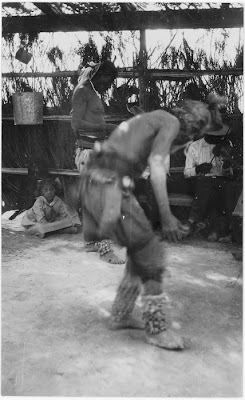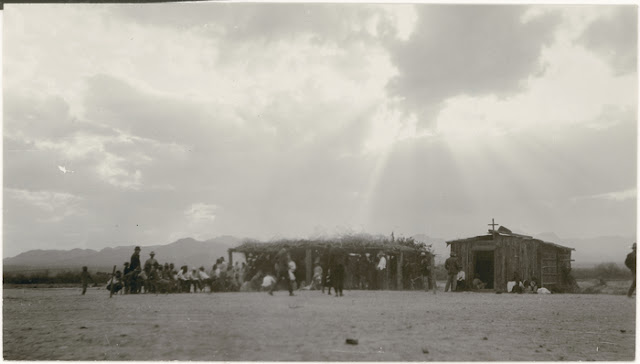 |
| Pascola solo dance, deer dance (Easter fiesta); a man dances under a shelter while wearing a mask, a kilt, and cocoon rattles on his ankles. Another dancer, a woman, a child, and a violin player are in the background. Photo by E.H. Davis [P01985] |
The coming of spring often conjures up images of giant bunny rabbits, fluffy chicks, and paschal lambs. For the Yoeme (Yaqui) people another animal, the deer, takes front and center at their Easter ceremonies. In 1921 Edward H. Davis, a collector and ethnographer for the Museum of the American Indian, spent time among the Yoeme (Yaqui) in Arizona and Mexico documenting daily life as well as special occasions such as Easter. These photographs, part of the The Edward Harvey Davis Photograph Collection, 1903-1939, depict the “Deer Dance” performed at Easter. This dance is a great representation of syncretism; the merging of the Catholic faith and the figure of Jesus with older views regarding ritual sacrifice and hunting. To learn more about the Yoeme (Yaqui) belief system you can check out David Delgado Shorter’s We Will Dance Our Truth: Yaqui History in Yoeme Performances.
 |
| Group gathered outside a small wooden chapel and ramada during an Easter fiesta. Photo by E.H. Davis [P01987] |
 | |
| Three musicians at deer-dance, Easter fiesta, sitting on the ground and playing on rasping sticks. Man on left plays the sticks on a half gourd floating in a bowl of water. Photo by E.H. Davis [P01982] |






.jpg)










